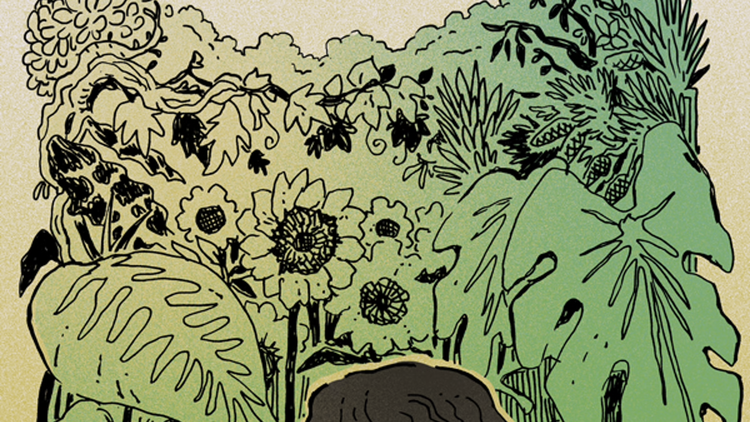The Corset Fallacy
A seamstress and horsewoman, Sara A Mueller writes speculative fiction in the green and rainy Pacific Northwest, where she lives with her family, numerous recipe books, and a forest of fountain pens. In a nomadic youth, she trod the earth of every state but Alaska and lived in six of them. She’s an amateur historical costumer, gamer and cook.
Her debut novel The Bone Orchard is available on March 22nd wherever you get your books.
Many people think that corsetry is about the size of one’s waist. That’s partly true, but for people with breasts, waist size is at best a side gig and at worst a red herring. The original goal of corsetry, from before anyone used the word ‘corset,’ is to wrangle boobs. Whether you go with a flattening number, a shelf support, or a cup-shaped show-em-high, boobs were job one.
Ask anybody who has ‘em or wants ‘em, boobs can be a dilemma. For starters, the larger they are the heavier they are, and they aren’t comfortable over a certain size. One can get in trouble for showing boob-adjacent nipples in public (exceptions of time and location may apply). Letting boobs sag and bounce and sway around tends to be frowned on. Not only is one expected to keep them under some kind of guidance, one is likely going to want to either show ‘em off or cover ‘em up or fake having them depending on a complicated mix of fashion, personal style, and social mores.
People with boobs have been trying for a very-long-time-indeed to keep said boobs acceptably supported. In Western cultures, this quest requires superstructure.The modern practice has gone back to hanging boobs from the shoulder in the manner of a medieval bra found in Germany; the other option is to support boobs from below. The methods of doing so have evolved over time depending on technology and the fashion dictates regarding how one was wearing one’s boobs this year. Enter the many variations on a full-torso boob-wrangler.
Stiffened fabric, called buckram, was effective in a garment called a kirtle, in which layers of fabric, often with a glue-stiffened layer, acted as basically a compression bra. This form of boob-support was superseded by a garment called a ‘pair of bodies’, which relied on the support of stiff reed ‘bents’. A pair of bodies made a smooth, straight silhouette, and with a little padding here and there, could strategically help Mother Nature with either support or fullness as was deemed necessary.
The myth of a brief flirtation with steel supports in the 16th century has been debunked. The steel didn’t happen, because by then boob-wrangling had found its true love – whalebone stays. Whale ‘bone’ was actually baleen. It was durable, flexible, and could take on the contours of the body, just like breaking in a pair of leather boots. Corsetry slowly evolved from straight to cuppy, and it developed into full blown curvy in the 19th century. Whalebone faded from the supply chain with the decline of whale hunting, but people still had boobs to deal with. It was only then that they turned to steel. Steel boning was cheaper than whalebone, and flat lengths of it could bend to make fashionable curves.
But fashion is nothing if not fickle, and fashion across all of time has striven for varying ratios of boobs to waist to butt, as well as varying boob height. So how did the boob-possessing (or boob-wanting) achieve whatever was the fashionable ratio this year? Mostly with padding. Lots and lots of padding. Padding out the boobs and the butt was much easier and far more comfortable than restricting the waist. Did some people tight lace instead of pad out? Yup! People have been making painful choices in the name of fashion for as long as adornment has existed. Those choices are rarely the norm.
The Corset Fallacy has wormed into the public consciousness, supported and amplified by popular media depictions. Corset wearers cling to bedposts. Corset wearers faint off cliffs, down staircases, and at the feet of reigning monarchs. People make massively incorrect ‘historical’ YouTube videos about the ‘dangers of corsets!’ supported and illustrated by factually-false screamers from previous centuries.
Men have been screaming about feminine clothing since the beginning of recorded public commentary. Literally. Predictably, they have screamed about corsets. They screamed from pulpits and in pamphlets. They screamed in newspapers. They screamed with illustrations. They screamed in textbooks. They screamed with faked x-rays. Victorian doctors screamed even though they hadn’t the foggiest anatomical knowledge of what they were screaming about. Screamers have screamed about corsets so much that they’ve created what I call ‘The Corset Fallacy’.
The persistence of the corset fallacy is absurd, unsupported by extant garments, and frustrating. For lo, the screamers are screaming unto this very day.
“Corsets displace your internal organs!” they howl. Know what moves your internal organs a lot more? Pregnancy. Want to talk displaced organs? Talk to any small-statured person who has carried twins.
“Corsets put pressure on your internal organs and leave them nowhere to go!” lament screamers who have never worn Spanx.
“You can’t move freely in corsets!” they wail, ignoring six centuries of hard labor done in variations of corsets. One might not want to run a marathon in a corset, but nor would one want to run a marathon in a three-piece suit.
“No other fashion,” the screamers shriek, “has the potential to do so much damage!” Ask a podiatrist about high heels and the shape of the toe boxes. Bring refreshments in case the podiatrist in question is prone to ranting.
“Corsets are painful!” Just like with modern bras: If it’s painful, it doesn’t fit.
“People faint in corsets!” Why yes, people have fainted in corsets. From lung disease, for the sake of looking fashionably frail, and even from forcibly compressing their ribs in the name of fashion extremes. Historically a corset was worn snug, yes, but if one can’t do basic housework in it, one should probably loosen the laces. If corsetry is impairing breathing and making the wearer faint, THE CORSET IS TOO TIGHT. Also? Don’t wear shoes that are too tight. And while we’re at it, don’t put a screwdriver in a live electrical outlet.
In the end, whether it’s used or abused, corsetry supports bits we’d rather didn’t bounce around. So do bras. And jockstraps. Taking off a corset or a bra at the end of the day was and remains ‘an out of bodice experience’. I can’t speak to jockstraps, but I bet taking those off feels pretty dang nice, too.
To see some actual dress historians – who have worn actual corsetry, and who have done actual research with extant garments – debunk these myths, check out Abby Cox’s Reacting to the "History of the Corset" and Reacting to Vogue's "Everything You Need to Know About the Corset" cause we haven't suffered enough.
And please, if you’re involved in producing entertainment, don’t propagate The Corset Fallacy. For the love of boobs.
Charm is a witch, and she is alone. The last of a line of conquered necromantic workers, now confined within the yard of regrown bone trees at Orchard House, and the secrets of their marrow.
Charm is a prisoner, and a survivor. Charm tends the trees and their clattering fruit for the sake of her children, painstakingly grown and regrown with its fruit: Shame, Justice, Desire, Pride, and Pain.
Charm is a whore, and a madam. The wealthy and powerful of Borenguard come to her house to buy time with the girls who aren't real.
Except on Tuesdays, which is when the Emperor himself lays claim to his mistress, Charm herself.
But now--Charm is also the only person who can keep an empire together, as the Emperor summons her to his deathbed, and charges her with choosing which of his awful, faithless sons will carry on the empire---by discovering which one is responsible for his own murder.
If she does this last thing, she will finally have what has been denied her since the fall of Inshil -- her freedom. But she will also be betraying the ghosts past and present that live on within her heart.
Charm must choose. Her dead Emperor's will or the whispers of her own ghosts. Justice for the empire or her own revenge.
Add The Bone Orchard to your tbr here. Order it from your local independent bookseller, or order it via Bookshop.org to support independent booksellers throughout the US and the UK. For international shipping, you can try Barnes & Noble. If you prefer audiobooks, here’s a Libro.fm link. You can also request The Bone Orchard from your local library — here’s how to get in touch with them. And if you need to order from the Bad River Website, here’s a link that will leverage your order for good.
In the meantime, care for yourself and the people around you. Believe that the world can be better than it is now. Never give up.
—Gailey


![Guest Host [sarah] Cavar](/content/images/size/w750/2025/03/COVER---Failure-to-Comply.jpg)



Member discussion